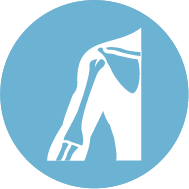COVID-19 Update – Yes we are open. Our rooms and processes have been modified to ensure your safety. Please click here to learn more.

There are three types of shoulder fractures: clavicle fracture, scapula fracture and humerus fracture.
The clavicle or ‘collarbone’ spans from the chest wall to the shoulder blade (scapula).
The clavicle can be fractured in a fall, or from a direct blow. As well as the bone being broken, there may also be damage to the ligaments that support the joints at each end of the clavicle.
Fractures of the clavicle can often be managed with a period of rest, followed by gentle mobilisation. However, certain fracture patterns are at high risk of having problems and require clavicle fixation surgery.
The scapula (shoulder blade) is a large bone with several parts to it. These include the glenoid (shoulder socket), the acromion, the coracoid process, and the blade-shaped scapula body.
Scapula fractures are usually the result of a high energy injury such as a motor vehicle accident or a fall at speed. A large number of muscles are attached to the scapula and certain fracture patterns make it difficult to use those muscles unless the fracture is repaired. Because of the force required to fracture a scapula, there are often other injuries present that need to be identified.
The glenoid is on the outside of the scapula and this can be fractured at the same time as a shoulder dislocation. Occasionally a glenoid fracture may be the only sign that a shoulder dislocation has occurred. It is important that a glenoid fracture is properly assessed and managed to minimise the risk of developing shoulder instability.
The acromion is the broad, flat part at the top of the scapula that connects to the acromioclavicular (AC) joint. The large deltoid muscle is anchored to the acromion and is one of the main muscles that move the arm. Fractures of the acromion can make it harder for the deltoid to work properly, which will lead to weakness of the shoulder.
The coracoid is a small beak-shaped projection that is under the clavicle and beside the glenoid. It has some strong ligaments attached to it that help keep the AC joint stable. Fractures of the coracoid can, therefore, lead to AC joint instability.
Fractures of the scapula can often be managed with a period of rest, followed by gentle mobilisation. However certain fracture patterns are at high risk of having problems and require scapula fixation surgery.
The humerus (arm bone) is located between the shoulder socket and the elbow. At the top of the humerus is the humeral head, which is the round ball of the shoulder joint. The rotator cuff tendons that help move the ball and socket joint are attached around the margin of the humeral head. This entire region is called the proximal humerus. Fractures of the proximal humerus usually occur as the result of a fall onto that side. These fractures become more common when the proximal humerus bone gets weaker (e.g. due to age).
A dislocation of the shoulder can cause an impaction fracture (i.e. a dent) in the humeral head. This fracture is called a Hill-Sachs lesion and, in some cases, it may be the only indication that a shoulder dislocation has occurred. It is important that a Hill-Sachs lesion is properly assessed and managed in order to minimise the risk of developing recurrent shoulder instability.
Proximal humerus fractures are usually managed with rest in a sling and then gentle mobilisation. However, certain fracture patterns will require surgery.
Proximal humerus fractures are generally repaired with plates and screws. If the rotator cuff tendons have been damaged then rotator cuff repair may also be necessary. In cases of severe fractures, especially in older patients, a reverse total shoulder replacement may be required.
Fractures that occur around the shoulder that are not managed properly can have a major impact on the ability to use the affected limb. At the Melbourne Shoulder and Elbow Centre, our surgeons are experts in the management of these injuries guiding you to the best course of treatment. This may not involve any surgery.